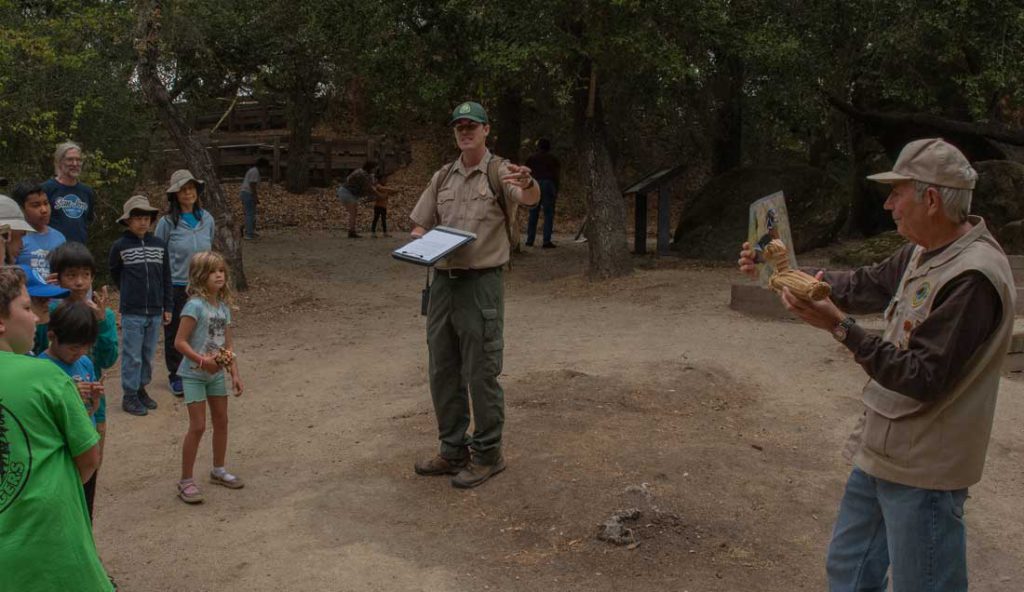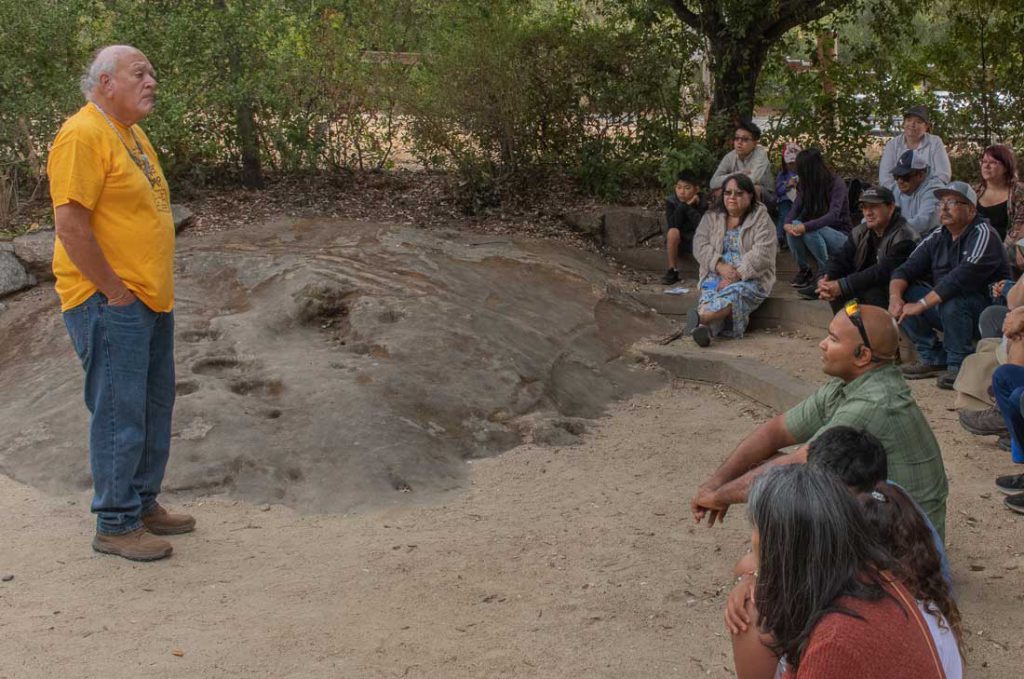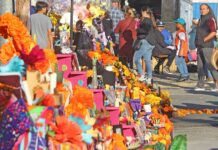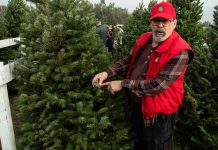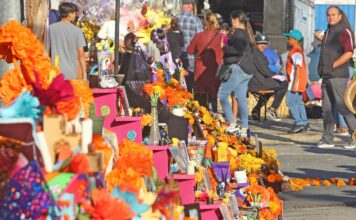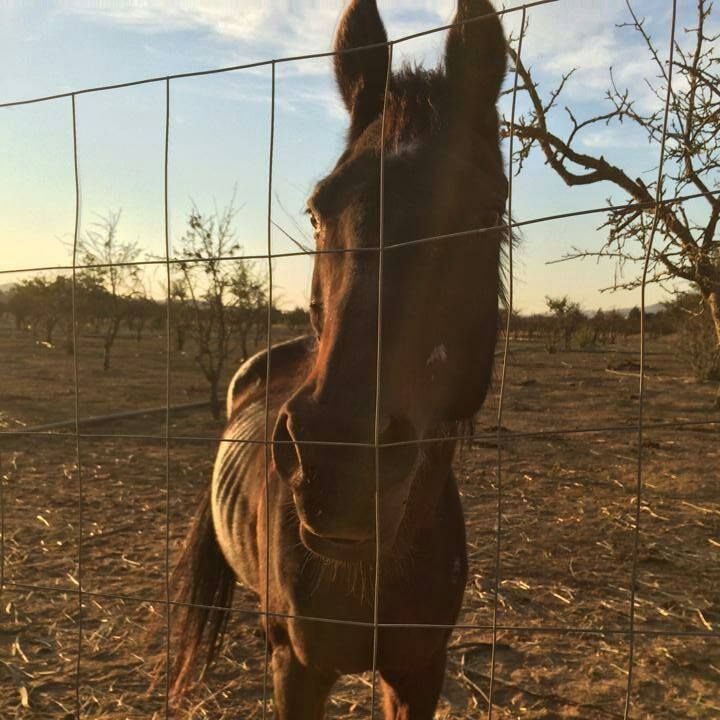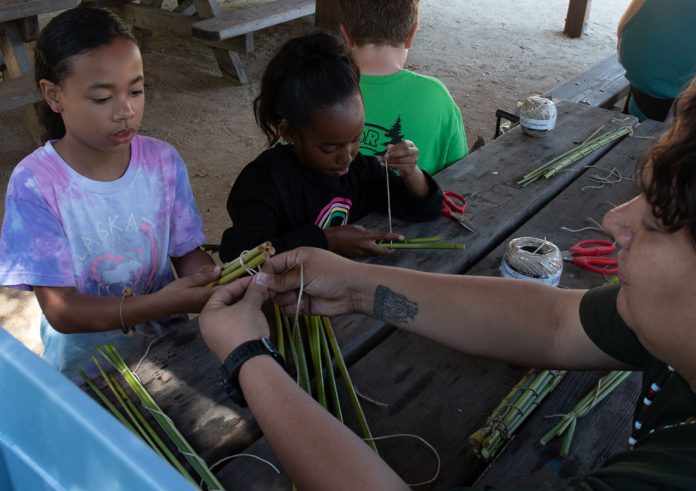
Families gathered at Chitactac Adams Heritage County Park on Watsonville Road Sept. 13 for a day of cultural education and hands-on activities celebrating the rich heritage of the Amah Mutsun people during the park’s free Family Day event.
The event featured guided tours led by volunteer docents who explained the significance of ancient petroglyphs, grinding rocks and other archaeological features scattered throughout the 4.6-acre park. Visitors learned about the site’s importance as a village location for indigenous peoples who lived along Uvas Creek for thousands of years.
Chairman Valentin Lopez of the Amah Mutsun Tribal Band served as a special guest speaker, sharing his people’s creation story and land stewardship philosophies with attendees. Lopez, who grew up near the site, described childhood memories of fishing and swimming at Uvas Creek with his family.
“Our people understood that we have the responsibility to take care of Mother Earth and all living things,” Lopez told visitors, explaining how his ancestors managed the landscape through careful plant cultivation and controlled burning practices.
The Amah Mutsun Youth Group also participated as special speakers, helping bridge generational knowledge sharing at the event.
Interactive demonstrations allowed families to experience traditional indigenous life through activities including acorn processing, traditional games like Chance-Staves, and crafting projects such as tule boat and pine nut bracelet making. Children participated in the traditional Hoop & Spear game while learning about native hunting techniques.
Docents demonstrated how indigenous peoples created duck decoys from wood and tule reeds, and explained the extensive trade networks that existed pre-contact and brought materials like obsidian to the area from distant locations, to be fashioned into tools such as spearheads.
Visitors also learned about riparian habitats and their critical role as food sources for native peoples. Lopez explained that his tribe’s territory extended from Morgan Hill south to Soledad, east to the Diablo Range, and west to the Pacific Ocean from Aptos to Elkhorn Slough.
“Our creation story very clearly defined the boundary lines of the tribes,” Lopez said. “Within that territory, everything was given to us, assigned to us, by our Creator.”
The event emphasized traditional ecological knowledge, including how indigenous people identified and cultivated the almost 400 different native plant species for medicine, food, tools, basketry, housing and other uses.
“We did not try to dominate them or domesticate them,” Lopez said. “When we saw a plant growing, we would see that this is where that plant chose to grow, this is where the Creator put that plant, and so we have a responsibility to steward this plant right here.”
Chitactac Adams Heritage County Park preserves one of the most significant Native American archaeological sites in the South Bay, featuring numerous bedrock mortars and petroglyphs created by the area’s original inhabitants.
